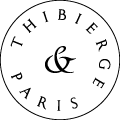“There can’t be a crisis next week!”
A new decade is beginning. What better time to think about how we organise our time and make some resolutions? And stick to them!
There is a question that comes back to us day after day. Is it better to note down our appointments in a diary or type them into a digital tool? Well, either way, each system has its merits! Whether you opt for a paper-based or digital planner, the most important thing is that you organise your time!
We rely on two tools to stay organised from day to day: the diary, which structures time, and the to-do list, which structures content. When we use these two tools together, we have an excellent system for managing our time.
A few years ago, I made the switch to a paper diary, which I use on a daily basis. Before that, I spent a long time experimenting with digital versions on the Blackberry, and then the iPhone. As long as it is the same size as your smartphone—so that you can have it on you at all times—writing down your appointments in a diary facilitates the link between mind and body. The hand is connected to the brain, so writing down your appointments makes it easier to remember them!
Having an overview of the week also makes it easier to memorise your schedule; at least if you have a vision-based memory. As Henry Kissinger jokingly pointed out: “There cannot be a crisis next week. My schedule is already full.”
Over the past few decades, we have seen the emergence of the to-do list. Each item on that list is constantly ranked according to its importance and urgency. What was urgent this morning may no longer be urgent this afternoon. And something that was not important last night may have become essential this morning. The diary dedicates a specific moment in time to each item, thereby assigning a fixed level of urgency to each one. The to-do list, on the other hand, is flexible. It lists items that can be brought forward or pushed back as needed.
On a computer or a smartphone, the to-do list can take the form of a simple text file in Excel, Word, or even a draft email. On paper, it can be written on a loose page or in a notebook. The important thing is that you have it in front of you at all times so that you can add to it or adjust it.
And what a wonderfully satisfying feeling it is to gradually cross off the tasks on your to-do list!
The whole team at Thibierge Paris wishes you a very happy new year in 2020.
Emeric Thibierge
Paris, 02 January 2020


